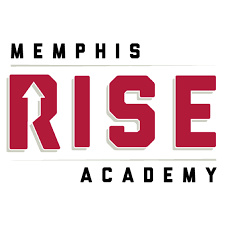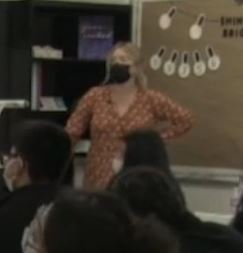09.10.21The First Days (of Cold Call) with Bradi Bair
 About a week ago I posted a clip of Bradi Bair Cold Calling with her math students at Memphis Rise Academy in Memphis, TN. I wrote about how she observed which students had the best answers and used that to make her Cold Call an honor. This was a great way to build a positive culture around Cold Call that would last the whole year, I argued.
About a week ago I posted a clip of Bradi Bair Cold Calling with her math students at Memphis Rise Academy in Memphis, TN. I wrote about how she observed which students had the best answers and used that to make her Cold Call an honor. This was a great way to build a positive culture around Cold Call that would last the whole year, I argued.
Today I’d like to show a bit more of Bradi’s Cold Calling, again focusing on some things she’s doing that are particularly useful to make Cold Call succesful at the beginning of the year. This video shows more examples of Bradi Cold Calling from the same class i showed before. Each example is a little different.
Bair.CCMontage.mp4 from TLAC Blog on Vimeo.
The first clip begins with Bradi reminding her class, “When we are looking for the Greatest Common Factor of the variables, we are looking for the one with the smallest exponent.” She then pauses. She hasn’t Cold Called yet. In fact she hasn’t even asked a question but before she asks Vanessa what the smallest exponent is, she gives the class ten seconds of Wait Time to study the sample problem and think about what the answer might be. Giving everyone lots of time to think makes them more likely to be successful answering. Especially when she intimates with a calm and soothing tone that she might be getting ready to Cold Call. You might ask what I mean by the idea that she “intimates that she might Cold Call,” and by that I mean is her body position. She strikes a pose… let’s call it “thoughtful” that she usesagain and again during the lesson. Each time happens a bit before she Cold Calls. It cues perceptive students to get ready. It looks like this:

It reminded me of something Denarius Frazier does right at the beginning of this video:
“Take a second to look at this diagram,” Denarius says, “and get ready for some questions.” As he says this, a warm but slightly puckish smile breaks across his face. The smile (accompanying the phrase “get ready for some questions”) tells his students that Cold Calls are coming and that he thinks they are a good thing. He intimates that it’s coming and combines that with lots of Wait Time so students can get ready. Of course, Bradi is teaching with a mask on so she can’t smile to cue her students that the Cold Call is coming, so that pose is a great substitute. It communicates thoughtfulness and a bit of warmth.
Note also that after Vanessa gets it right, Bradi causes lots of positive energy to shine down on her student. There’s snapping from classmates–a signal of approval and support–and Bradi says, “Yeah, I like how she said that’s not just X, that’s X to the first power,” calling out something specifically effective and knowledgeable about her answer. She’s keeping all the rigor of the Cold Calling but making sure her students feel their success.
The second example of Cold Calling is a bit subtler. The key comes from the first thing Bradi says: “The first one it seems like we were all…pretty much in agreement.” She’s observed carefully and knows everyone has it right. But rather than skipping it she uses it as a chance to let Rosa “dunk” by getting it right in response to the Cold Call. Again you can hear those snaps of support–Bradi asks for them explicitly here–“Snaps if you also got 3x,” Bradi is creating opportunities for students to see themselves succeeding at Cold Call and to know whey can rise to the challenge.
On the third Cold Call Bradi’s body language is again key. Before she Cold Calls Beanna, you can see her in her “thoughtful” pose again. As Beanna starts to answer, Bradi “sends magic”… that’s the movement she’s making with her fingers. It’s a way she’s taught her students to show support to a classmate when the work is hard and she uses it herself sometimes too. She’s reminding her student that she wants her to succeed when she Cold Calls her.
In the last segment she Cold Calls Powell. “If we’re multiplying two numbers to make a negative Powell, what does that mean about one of my numbers?” Powell hesitates. Bradi deftly defuses any tension by saying, “I might have asked it a little weird.” Then she asks again: “If we’re trying to multiply to make a negative what does that mean about those numbers?” Now Powell gets it. “Yeah one of them has to be negative,” Bradi repeats in a cheery voice and classmates snap along to punctuate the success.
My point here is not just that Bradi is effective with her Cold Call but how carefully she designs it at the beginning of the year to build students comfort and familiarity with it (she Cold Calls again and again in this lesson) and to ensure that their interactions via Cold Call help them to feel the value of it: it keeps them on their toes; it challenges them but they in turn are mostly successful. And you can feel the engaged and positive energy in her classroom as the video fades out on her Turn and Talk. Her students, no surprise, are highly engaged in the task.
